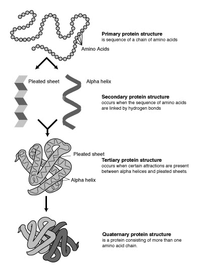
Photo from wikipedia
Accurate prediction of binding affinities from protein-ligand atomic coordinates remains a major challenge in early stages of drug discovery. Using modular message passing graph neural networks describing both the ligand… Click to show full abstract
Accurate prediction of binding affinities from protein-ligand atomic coordinates remains a major challenge in early stages of drug discovery. Using modular message passing graph neural networks describing both the ligand and the protein in their free and bound states, we unambiguously evidence that an explicit description of protein-ligand noncovalent interactions does not provide any advantage with respect to ligand or protein descriptors. Simple models, inferring binding affinities of test samples from that of the closest ligands or proteins in the training set, already exhibit good performances, suggesting that memorization largely dominates true learning in the deep neural networks. The current study suggests considering only noncovalent interactions while omitting their protein and ligand atomic environments. Removing all hidden biases probably requires much denser protein-ligand training matrices and a coordinated effort of the drug design community to solve the necessary protein-ligand structures.
Journal Title: Journal of medicinal chemistry
Year Published: 2022
Link to full text (if available)
Share on Social Media: Sign Up to like & get
recommendations!